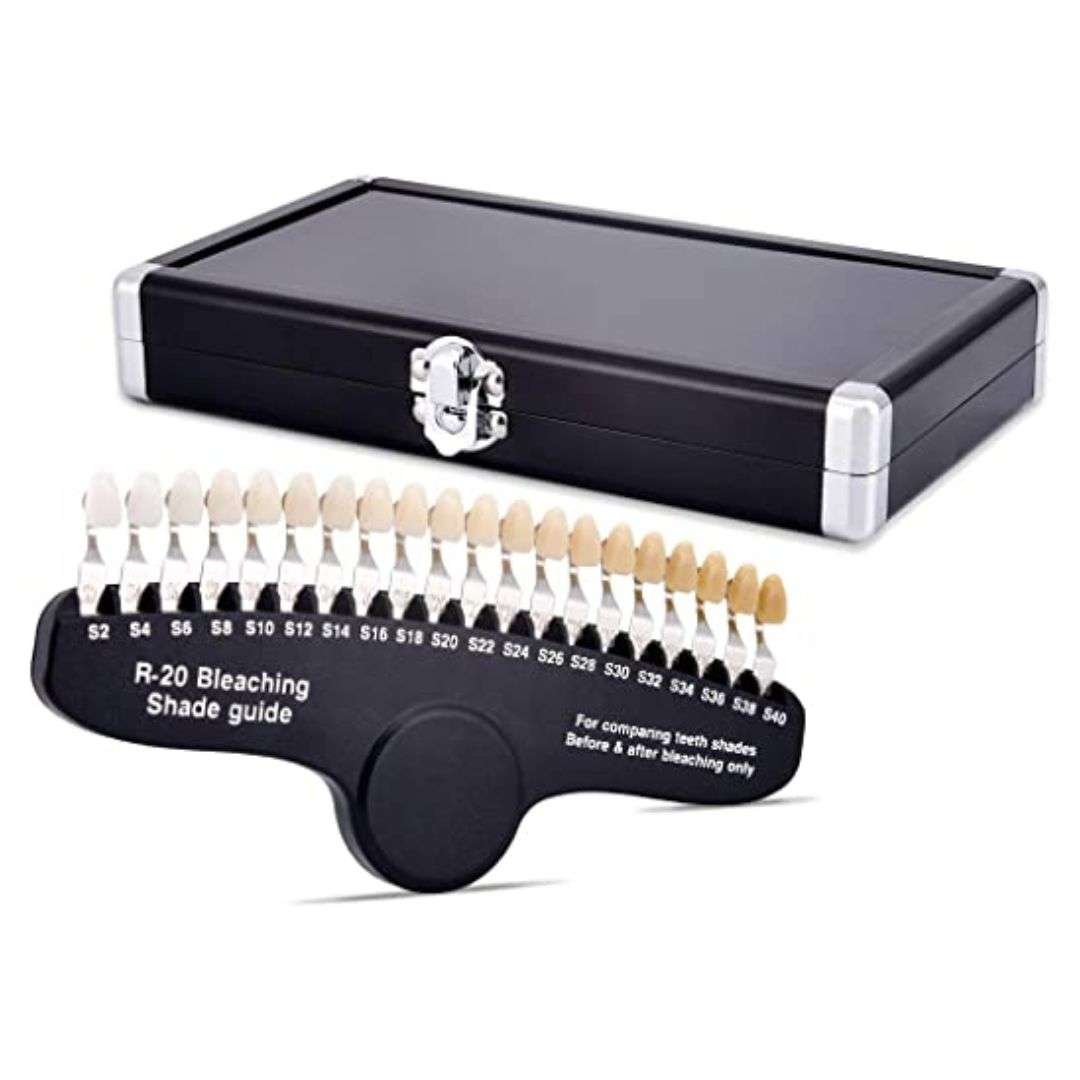Teeth Whitening Shade Guide

The quest for a brighter, more radiant smile has led to the development of various teeth whitening solutions. Understanding the teeth whitening shade guide is crucial for achieving the desired results. The most commonly used shade guide is the Vita Shade Guide, which consists of four main shade groups: A, B, C, and D.
Understanding the Vita Shade Guide
- A Shade Group: This group ranges from A1 (lightest) to A4 (darkest) and is characterized by a reddish-brown hue. A1 is the lightest shade, often considered the most desirable for those seeking a dramatically whiter smile.
- B Shade Group: This group, from B1 to B4, has a more yellowish hue compared to the A group. B1 is lighter and less yellow than B4.
- C Shade Group: The C group, ranging from C1 to C4, exhibits a grayish hue. This group is less common but is essential for matching certain tooth colors.
- D Shade Group: The D group, from D1 to D4, is characterized by a reddish-gray hue and is often used for teeth with a more pronounced gray or brown tint.
How Teeth Whitening Works
Teeth whitening is a cosmetic procedure that aims to remove stains and discoloration from the teeth, revealing a whiter, brighter smile. The most common methods include:
- Professional In-Office Whitening: Performed by a dentist, this method uses high-concentration bleaching agents for rapid results.
- At-Home Whitening Kits: Provided by dentists or available over-the-counter, these kits contain lower concentration bleaching agents applied over a longer period.
- Whitening Strips and Toothpaste: These are over-the-counter products for mild discoloration, offering a more subtle whitening effect over time.
Choosing the Right Whitening Shade
Selecting the right teeth whitening shade involves considering your natural tooth color, the color of your gums, and your personal preference for how white you want your teeth to be. It’s also important to consult with a dentist to determine the most suitable whitening method and shade for your teeth.
Pre-Whitening Preparation
Before undergoing teeth whitening, it’s essential to:
- Consult a Dentist: To ensure your teeth and gums are healthy enough for the procedure.
- Understand Your Current Shade: Using the Vita Shade Guide, identify your current tooth shade to set realistic expectations for the outcome.
- Consider Dental Work: If you have fillings, crowns, or implants, these will not change color with whitening and may need to be replaced to match your newly whitened teeth.
Post-Whitening Care
To maintain your whiter smile, follow these tips:
- Regular Dental Check-Ups: To ensure your oral health remains optimal.
- Good Oral Hygiene: Brush and floss regularly to prevent new stains from forming.
- Avoid Stain-Causing Foods and Drinks: Limit consumption of coffee, tea, wine, and tobacco, which can stain your teeth over time.
Common Questions About Teeth Whitening
Is teeth whitening safe?
+Yes, when performed under the supervision of a dentist, teeth whitening is safe. However, it's not recommended for everyone, especially those with tooth decay, gum disease, or teeth sensitivity.
How long does teeth whitening last?
+The duration of teeth whitening results can vary significantly among individuals. On average, whitening can last from a few months to three years, depending on oral hygiene and consumption of stain-causing substances.
Can I whiten my teeth at home safely?
+Yes, with the right guidance from a dentist and using products specifically recommended for at-home use, you can safely whiten your teeth at home. However, it's crucial to follow the instructions carefully and attend follow-up appointments as advised.
In conclusion, understanding the teeth whitening shade guide and the process of whitening itself is the first step towards achieving the smile you’ve always wanted. With the right approach and maintenance, you can enjoy a brighter, healthier-looking smile for years to come.

